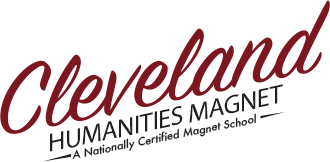9th Grade – Honors English
Honors English 9AB is an exploration of world cultures through the reading of fiction and non fiction, while learning to transform your writing. We focus on four regions in particular: Australia, Mexico, Africa and China. Students will do character analysis, essay writing, research, writing and delivering speeches, and projects for each unit. Literature is taught thematically with the rest of the 9th grade team, which consists of the classes, Genetics/Physical Anthropology, Social Institutions, and Art and Religion.
Unit 1: An Interdependent and Globalized World
In this introductory unit, students will be introduced to the concept of globalization and begin to understand the responsibility they hold as citizens of a global community. As they grasp concepts such as ethnocentrism, and cultural sensitivity, students will see how the world in which they live is just one model of reality and that the study of other cultures must be done objectively. An additional topic of importance that we focus on is critical thinking, another crucial skill necessary for those living in a globalized world.
Key Concepts:
Globalization
Ethnocentrism
Cultural Sensitivity
Critical Thinking
Identity
Readings:
Dumas, Firoozeh. Funny in Farsi. New York: Random House, 1994. Print.
“Critical Thinking,” adapted handout from Jan Rehner
“Globalization,” Thomas L. Friedman
Video:
White Dawn
Unit 2: Australian Aboriginal Culture and Geography
In the second unit, our main focus is on the study of a folk society and their characteristics that differ from industrialized societies. A folk society’s longevity, such as the Australian Aboriginals, is directly dependent upon their ability to uphold their defining characteristics and maintain a close and symbiotic relationship with their natural environment. This essential relationship will become evident as students study how the Australian Aboriginal people were able to survive both the unforgiving surroundings and the arrival of the Europeans who attempted to drastically change their culture forever.
Key Concepts:
Written and Oral Mythology
Critical Thinking
Bias
Persuasive Writing
Video:
Rabbit Proof Fence
Unit 3: Mexican Culture, History, and Geography
The Mexico unit begins with a study of myths and legends that allow students to understand the rich origins of modern day Mexican culture. This culture comes to life in the coming of age novel, Bless Me, Ultima, where the young protagonist, Tony Marez y Luna, faces some significant life decisions as he is caught between two conflicting cultures. Students use their knowledge of literary devices and central themes of the text to analyze how several of the characters handle both conflict and synthesis.
Key Concepts:
Myths
Legends
Themes of novel
Character Analysis
Irony
Comic Relief
Literacy Devices
Readings:
“Tales About Beginnings,” adapted handout from World Literature
“Corn Mother,” retold from nineteenth-century sources
“La Llorona,” adapted handout
“Vaquero,” Joaquin Miller
Anaya, Rudolfo. Bless Me, Ultima. New York: Warner Books, 1972. Print.
Videos:
Mi Familia
Bless Me, Ultima
Unit 4: African Culture, History, and Geography
This unit begins with a study of proverbs that establishes a foundation for an understanding of Africa’s rich culture. Students will also read selections from the novels, Joys of Motherhood and Things Fall Apart, to fully comprehend the concept of human dignity and dehumanization. These novels set up a context that allows students to delve into these issues with the play, Les Blancs, by Lorraine Hansberry. We conclude the unit with a focus on nonviolent resistance in South Africa in order to create an appreciation for an alternative way of reclaiming one’s dignity in the face of oppression.
Key Concepts:
Oppression
Dehumanization
Emasculation
“White Man’s Burden/Brown Man’s Burden”
Colonization
Dignity
Ubuntu
Non-violent Resistance
RAW Model
Dramatization
Readings:
“The Power of the Word,” adapted handout from The African Literary Tradition
Adapted selections from Joys of Motherhood, Buchi Emecheta
Adapted selections from Things Fall Apart, Chinua Achebe
Hansberry, Lorraine. Les Blancs. New York: Vintage Books, 1972. Print.
“White Man’s Burden,” Rudyard Kipling
“Brown Man’s Burden,” Henry Labouchere
“Writing a Research Paper,” adapted handout from History: A Student’s Guide to Research and Writing
“Nonviolent Resistance,” adapted handout from “Martin Luther King, Jr. Philosophy on Nonviolent Resistance, Civil Rights Movement”
“The Bench,” Richard Rive
Unit 5: Chinese Culture, History, and Geography
We begin this unit with an analysis of Confucius’ analects to gain a deeper understanding of his life and philosophy that greatly influenced Chinese traditions and culture. However, much of Chinese culture dealt with the conflict between preserving traditions and embracing progress that challenged the society through Mao’s communistic rule. This transition impacted the lives of many Chinese citizens, which can be seen in the novel, Red Azalea, through the events of a young girl forced to find her identity under oppressive circumstances.
Key Concepts:
Confucianism
Legalism
Buddhism
Cultural Revolution
Memoir
Classical vs. Contemporary China
Readings:
“The Analects,” Confucius, translated by Arthur Waley
“Confucianism,” adapted handout from The World’s Religions, Huston Smith
“The Story of Miss Li,” Po Hsing-chien, translated by Arthur Waley
“A Visit from the Footbinder,” Emily Prager
Min, Anchee. Red Azalea. New York: Pantheon Books, 1994. Print.
Video:
The Last Emperor


